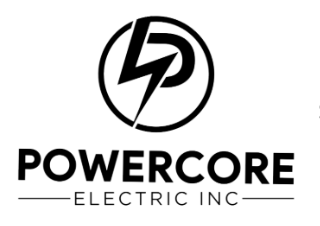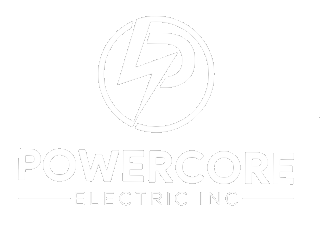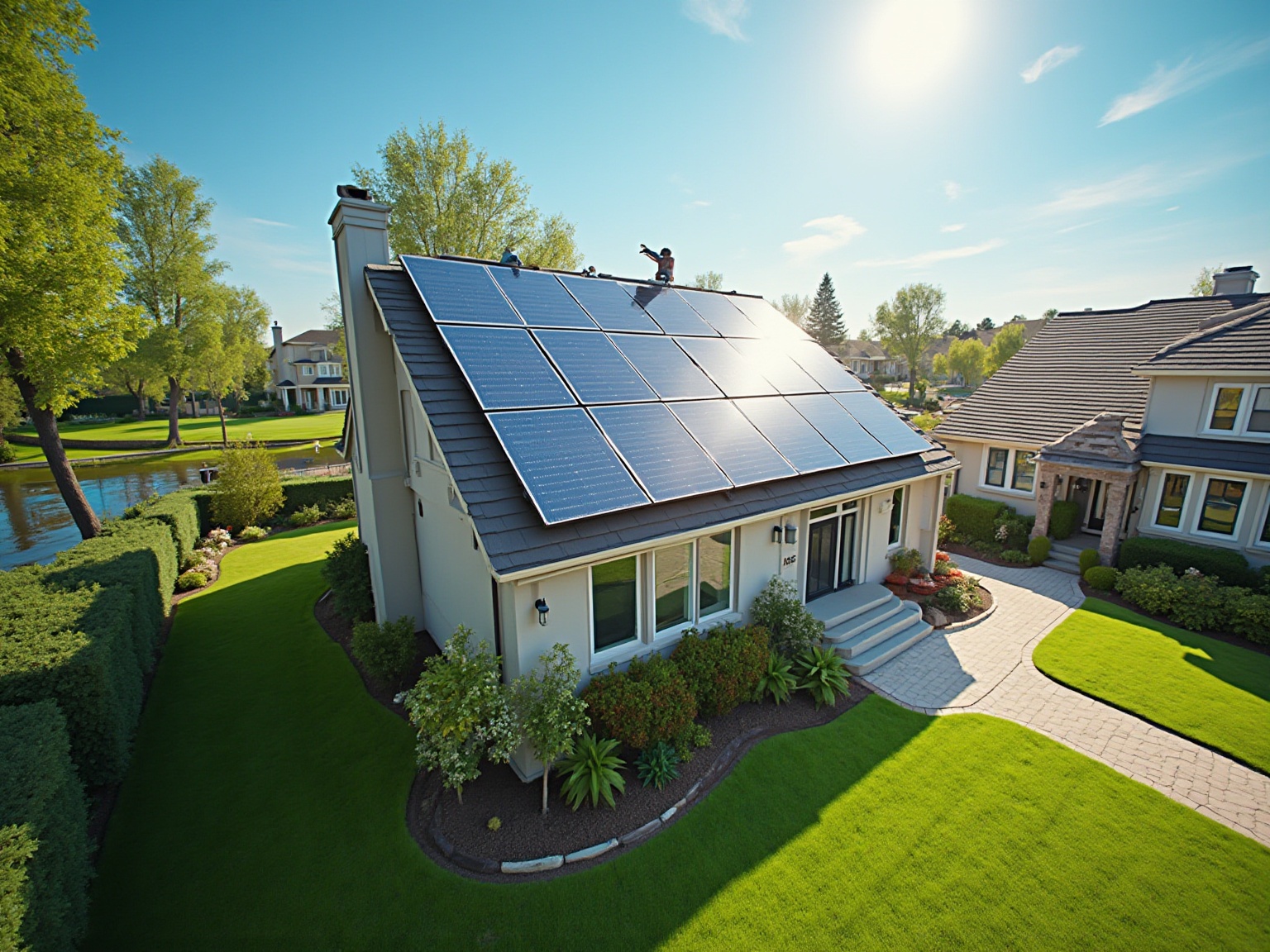Overview
To calculate how much to get solar panels installed, you should assess your power needs, evaluate your roof, research local regulations, set a budget, consult with experts, and consider battery options and inverter types. The article outlines these steps along with detailed cost considerations, including equipment, labor, and maintenance expenses, while highlighting financial incentives that can significantly reduce overall installation costs.
Introduction
As homeowners increasingly seek sustainable solutions to combat rising energy costs and environmental concerns, solar panel installation has emerged as a beacon of hope. The journey towards harnessing solar energy begins with understanding the essential steps involved in planning and executing a successful installation. From evaluating energy needs and assessing roof conditions to navigating local regulations and exploring financing options, each step plays a critical role in ensuring a smooth transition to solar power.
This article delves into the key factors influencing solar panel costs, the long-term benefits of making the switch, and the myriad financial incentives available to help homeowners make informed decisions. By embracing solar energy, not only can homeowners save money, but they can also contribute to a cleaner, more sustainable future for all.
Essential Steps for Planning Your Solar Panel Installation
- Assess Your Power Needs: Start by examining your utility bills from the past year—this is like taking your home’s power pulse! Understanding your average monthly usage is crucial, as it will inform the size of the solar system best suited for your needs. As Tony Mariotti emphasizes, a staggering 65.5% of power is lost before reaching consumers, underscoring the importance of being mindful of consumption patterns. For example, nearly all U.S. households (99%) have at least one refrigerator, with the average operating cost being around $87 per year. Insights like these can empower you to make informed decisions about your energy requirements.
- Evaluate Your Roof: Now, let’s discuss your roof—it’s the canvas for your energy panels! Check its condition, orientation, and shading. Ideally, photovoltaic panels perform best on south-facing roofs with minimal shade, maximizing efficiency and harnessing sunlight effectively. If your roof shows signs of wear, addressing these issues beforehand can save you time and money later.
- Research Local Regulations: Before proceeding with setup, familiarize yourself with local regulations, including zoning laws, permitting requirements, and any homeowners’ association rules. Since each state has its own rules concerning panel setups, doing your research will assist you in avoiding challenges later on.
- Set a Budget: Establishing a budget is essential, especially when considering how much to get solar panels installed. Include how much to get solar panels installed, as well as installation costs, equipment purchases, and potential maintenance needs. A clear financial strategy enables you to investigate renewable solutions that suit your budget while still reaching your power objectives. Remember, investing in renewable energy is not just an expense; it’s a step toward energy independence.
- Consult with Experts: Finally, don’t hesitate to consult with energy system specialists. These experts can offer tailored advice and estimates based on your unique situation. Their insights into the best systems for your needs will help ensure you maximize your energy investment. By collaborating with professionals, you can navigate the complexities of energy installation with confidence.
- Consider Battery Options: Choosing the appropriate battery is essential for effective power storage. Look for batteries that provide high capacity and durability, such as lithium-ion options, which can improve your system’s effectiveness by storing excess power for use during non-sunny periods.
- Choose the Right Inverter: The inverter is a key component of your solar system, converting the direct current (DC) generated by the panels into alternating current (AC) for your home. Investigate various inverter types, such as string inverters or microinverters, to ascertain which best meets your power requirements and maximizes efficiency.
Furthermore, consider the influence of biomass sources in your planning. Comprehending their application and environmental effects can further improve your choices and contribute to a more sustainable future.
Understanding the Costs of Solar Panel Installation
-
Equipment Expenses: When exploring the realm of renewable energy, the first aspect you’ll face is equipment expenses. This category includes the cost of photovoltaic panels, inverters, and mounting hardware. Depending on the brand and type of panels you choose, these costs can vary widely. Notably, the number of photovoltaic panels needed to power a home typically ranges from 20 to 25, but can vary from 15 to 34 depending on home size, panel efficiency, and sunlight exposure. For California homeowners, these figures are especially pertinent considering the state’s plentiful sunlight and growing use of renewable technologies. On average, after incentives, when assessing how much to get solar panels installed, the price of a photovoltaic system in California can be around $19,000, making it a financially wise investment compared to conventional electricity expenses. Furthermore, the price of a home Tesla charger can vary from $500 to $1,500 based on the model and setup needs, which should be taken into account together with renewable energy device expenses for a complete financial assessment.
-
Labor Expenses: Next are labor expenses, which can represent a substantial part of your overall setup expenditures. It’s a smart strategy to gather multiple quotes from reputable installers to find out how much to get solar panels installed at a competitive rate. Recent trends suggest that labor expenses can fluctuate depending on region and market conditions. For example, the geographic position, represented by postal code, influences expenses related to solar technology due to differences in sunlight availability and local benefits like rebates and tax reductions. This is particularly crucial in California, where various programs can significantly reduce how much to get solar panels installed. Doing your homework here can lead to substantial savings.
-
Permitting and Inspection Fees: Don’t forget about permitting and inspection fees! Local authorities often require permits for photovoltaic installations, which can increase your overall expenses. These fees can fluctuate based on your location, so it’s essential to factor them into your budget to avoid any surprises down the line. In California, these fees are generally well-defined, but staying informed about changes can help you plan better.
-
Maintenance Costs: While photovoltaic panels are known for their low maintenance needs, it’s wise to set aside some funds for occasional cleaning and inspections. This proactive approach helps ensure optimal performance and longevity of your energy system. A little attention can go a long way in keeping your investment running smoothly for years to come. Moreover, preserving your photovoltaic system can enhance energy production, which is vital when reflecting on the increasing expenses of conventional electricity. For solar-powered heaters, regular maintenance can also enhance efficiency and prolong lifespan, making it a worthwhile investment.
-
Financing Options: Finally, consider how you plan to fund your energy system. Options abound, from cash purchases to loans and leasing agreements, each affecting your overall expenses differently. Emily Walker, a specialist in the field, observes,
With the ITC, you’ll receive a credit equivalent to 30% of your total panel installation expenses applied to your federal tax bill.
This incentive, along with various state incentives in California, is a fantastic way to reduce upfront costs and enhance your long-term savings potential. Exploring these options will empower you to make the best financial decision for your energy journey, especially when combined with the benefits of installing an EV charging solution at your home.
Exploring Financial Incentives and Savings for Solar Panels
Federal Tax Credit
One of the most exciting incentives for Long Beach renters considering solar panels is the federal solar tax credit. This program allows you to claim an impressive 30% of your setup costs for systems installed between 2016 and 2032, providing a substantial reduction in your upfront expenses. If you’re considering adopting renewable sources, this tax credit is a fantastic opportunity to invest in clean alternatives while saving money.
State and Local Rebates
In addition to the federal tax credit, many states and local governments offer their own rebates for solar installations. These can differ significantly, so it’s a good idea to check with your local utility authorities to see what programs are currently available in your area. For instance, the California Solar Initiative provides cash rebates for eligible photovoltaic systems, making renewable power even more affordable.
Net Metering
Net metering is another fantastic benefit of going solar that Long Beach renters should consider. This program permits you to sell any surplus power your solar panels generate back to the grid. Not only does this provide you with credits on your utility bills, but it also helps support a cleaner power grid.
It’s a win-win scenario that puts money back in your pocket while encouraging renewable resource use.
Property Tax Exemptions
Did you know that in some areas, the increase in your property’s value from installing solar panels may be exempt from property taxes? This exemption can make renewable energy systems even more financially appealing for renters, allowing you to enjoy the advantages of clean energy without the added burden of increased property taxes.
Financing Programs
If you’re concerned about how much to get solar panels installed, there are several financing programs available, including options that cater specifically to renters. One remarkable choice is the Property Assessed Clean Energy (PACE) program, which enables you to finance renewable energy systems over time via property taxes. This signifies you can relish the advantages of renewable power immediately while also understanding how much to get solar panels installed to handle your finances more easily.
Furthermore, certain regional credit unions provide low-interest loans specifically for renewable energy projects, making it simpler to fund your investment.
Environmental Impact
Moreover, it’s important to consider the broader impact of solar energy. According to a case study by the Solar Energy Industries Association (SEIA), US installations contribute to a significant reduction in CO2 emissions, with an estimated 183 million metric tons reduced annually. The SEIA emphasizes that implementing more renewable energy will sharply reduce the carbon, sulfur, and mercury pollution associated with burning fossil fuels, saving approximately 60,000 American lives each year.
The goal is for renewable energy to produce 30% of US electricity generation by 2030, making it a crucial step toward a sustainable future for all.
Real-World Examples
Many Long Beach renters have successfully utilized these incentives. For example, Jane Doe, a community tenant, recounted her experience: “Thanks to the federal tax credit and state rebates, I was able to install photovoltaic panels with minimal initial expenses, and now I’m saving on my utility bills each month!” Such testimonials emphasize the genuine advantages of utilizing renewable energy and can motivate others to pursue comparable actions.
Key Factors Influencing Solar Panel Costs
When contemplating how much to get solar panels installed, it’s crucial to acknowledge that expenses can differ significantly due to various elements. First and foremost, your location plays a crucial role. Local market conditions, including labor rates and the availability of materials, can significantly influence the overall price.
For example, regions with a high demand for energy setups may experience heightened rivalry among providers, possibly reducing expenses due to market dynamics.
Next, the kind of panels you select is important. There are several options available—monocrystalline, polycrystalline, and thin-film panels—each with its unique price points and efficiencies. Monocrystalline panels, known for their high efficiency and sleek design, tend to be more expensive but can provide better long-term savings due to their performance.
Investing in premium solar equipment is essential, as the efficiency of solar panels continues to improve, with popular models producing about 400 watts of electricity. This can result in improved warranties and slower deterioration, ultimately conserving more money over time. Another key aspect is the intricacy of the setup.
The type and angle of your roof can influence labor expenses, as more intricate setups may require additional time and expertise. For example, a roof with multiple angles or unique architectural features may necessitate a more tailored installation approach, influencing the final cost.
System size also plays a significant role in pricing. While larger systems usually have a higher initial expense, they can result in significant savings over time, making size a crucial factor in your decision.
As you assess your choices, keep in mind that larger systems typically provide a lower average expense per watt, which can improve your return on investment. Furthermore, don’t ignore the financial and ecological advantages of heating systems, such as savings on utility bills, job creation, and a decrease in greenhouse gas emissions. These systems not only contribute to a more sustainable living environment but also support equitable access to renewable resource solutions.
For example, water heating systems can greatly decrease energy expenses while delivering hot water effectively, making them a supplementary choice to photovoltaic panels.
When assessing service providers, it’s essential to compare their offerings, warranties, and customer support. Some providers may specialize in solar panels, while others may offer a broader range of services, including solar water heating solutions. Understanding how much to get solar panels installed by assessing the strengths and weaknesses of each provider can help you choose the best value for your needs. Lastly, consider available incentives when calculating your total expenses.
As noted by EnergySage, permits and fees can contribute a few thousand dollars to your installation, accounting for about 8% of the total expense. Understanding permitting processes is crucial, as 85% of installers using NREL’s SolarAPP+ permitting software say it makes permitting significantly easier, potentially reducing these costs. By factoring in these incentives and rebates, you can significantly reduce your overall investment.
By understanding these variables, you can make a more informed decision that aligns with your objectives and budget.
Long-Term Benefits of Installing Solar Panels
- Energy Savings: Producing your own electricity through photovoltaic panels can result in significant decreases in your monthly utility expenses. In fact, numerous property owners indicate typical savings on power that greatly exceed initial setup expenses over time, leading them to consider how much to get solar panels installed as a financially sound decision. Plus, with innovations like the Tesla home charger, you can further optimize your energy consumption and savings.
- Increased Home Value: Did you know that homes fitted with photovoltaic panel installations frequently see an uptick in property value? This increase is not just a trend; it reflects the growing consumer preference for energy-efficient homes. In 2024, statistics indicate that homeowners investing in renewable energy can expect their property values to rise, making it a smart investment for the future. With government initiatives focused on encouraging renewable resources, the financial incentives make this an even more attractive choice for those considering how much to get solar panels installed.
- Environmental Impact: Solar power stands out as a clean, renewable resource that plays a vital role in reducing your carbon footprint. By harnessing the sun’s power, you’re contributing positively to the environment and supporting sustainable practices that benefit our planet. Comprehending how photovoltaic panels function on a house, including the conversion of sunlight into electricity through photovoltaic cells, can empower you to make informed choices for a greener future.
- Power Autonomy: Choosing photovoltaic panels means gaining control of your utility expenses and decreasing dependence on conventional power sources. This newfound independence provides peace of mind, especially in a time of fluctuating utility prices and potential outages. With over 9.4 GW of photovoltaic cells imported as of late 2024, the transition towards sustainable power is gaining momentum, allowing homeowners to ensure their power future. Moreover, the aggregated contracted pipeline of over 25 GW from major corporations such as Amazon, Google, and Meta highlights the increasing investment in renewable sources, reinforcing the significance of independence in power. To enhance this independence, selecting the best batteries for efficient power storage, such as lithium-ion options, can ensure you have backup power when needed.
- Government Support: Investing in photovoltaic panels aligns perfectly with ongoing government incentives and programs that promote renewable energy. These initiatives not only enhance the financial viability of renewable energy investments but also contribute to broader sustainability goals. As 85% of installers utilizing NREL’s SolarAPP+ software have found, the permitting process is now smoother than ever, making it easier than ever to embark on your energy journey. Additionally, the trend of homeowners installing batteries primarily for backup power reflects a shift in consumer priorities towards energy security, further highlighting the advantages of photovoltaic installations. Regular cleaning and maintenance of solar panels also play a crucial role in maximizing their efficiency and longevity, ensuring that your investment continues to yield benefits for years to come.
Conclusion
Making the decision to install solar panels is a significant step towards embracing sustainability and reducing energy costs. By thoroughly assessing energy needs, evaluating roof conditions, and understanding local regulations, homeowners can lay a solid foundation for a successful solar installation. Setting a clear budget and consulting with professionals further ensures that the chosen system aligns with individual goals and financial capabilities.
Understanding the various costs associated with solar panel installation—including equipment, labor, and permitting fees—is crucial for making informed financial decisions. Homeowners have access to a range of financing options and incentives, such as the federal solar tax credit and local rebates, which can significantly reduce upfront expenses. By leveraging these incentives, the transition to solar energy becomes not only feasible but also economically advantageous.
The long-term benefits of solar installation extend far beyond immediate savings. Homeowners can experience reduced utility bills, increased property value, and a positive environmental impact. Embracing solar energy also promotes energy independence, allowing individuals to take control of their energy consumption amidst fluctuating market conditions.
In conclusion, investing in solar energy is a proactive step towards a sustainable future. By understanding the essential steps, costs, and benefits associated with solar panel installation, homeowners can confidently embark on their solar journey, contributing to a cleaner environment while enjoying the financial rewards that come with it. Now is the perfect time to harness the power of the sun and make a lasting impact on both personal finances and the planet.


